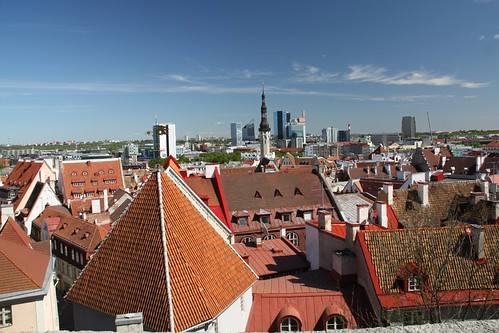
As I mentioned in my first post about Estonia, we absolutely loved Tallinn. The old medieval city couldn’t have been cuter, and learning about the history of Estonia was quite fascinating. Estonia has been independent for very little of its history, which makes this particular period seem quite cherished and celebrated. Perhaps it’s this new-found pride in their country that allows the Estonians to smile politely at the herds of tourists tromping through their historical city center.
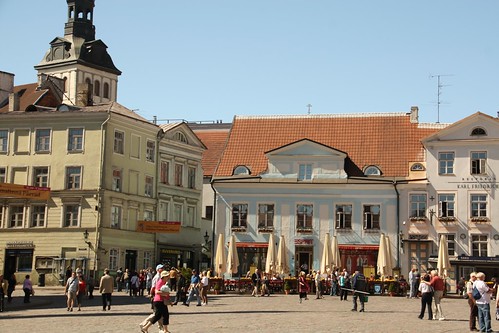
The old town is full of restaurants and bars, almost all sporting English menus to lure in tourists. There are also plenty of craft shops and galleries, most selling very nice things. We enjoyed spending a couple hours in the Linnamuuseum learning about the history of Estonia, but I preferred the personal perspective of the guide on the tour we took.
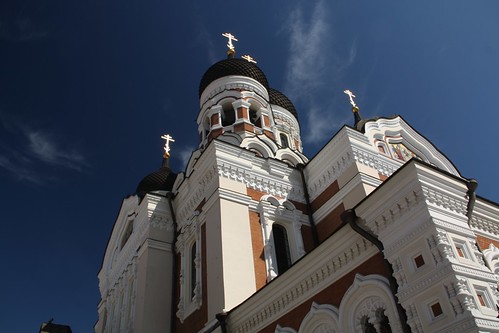
One could easily be forgiven for never leaving the old town at all, charming as it is, but we found some interesting destinations outside the city, as well. We took a combo bus/walking tour which brought us along the coast and out to the bizarre architectural structure which is the Lauluvaljak, an outdoor theater where a big folk song festival takes place every so many years. But the real excitement of the theater is the singing revolution that took place here, which helped lead Estonia to independence from the USSR in 1991.
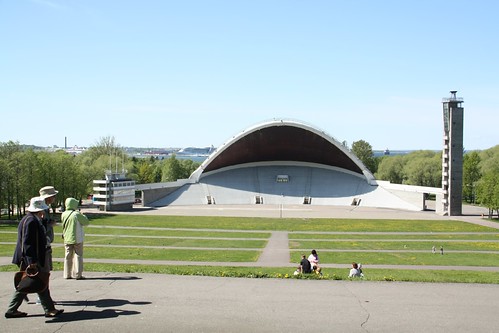
Another favorite bit of our trip was the KUMU art museum, housed in a gorgeous new building and easy to reach by tram from the old town. Despite the museum’s oppressive rules for visitors, I was highly impressed with the quality of the collection. Lunch at the cafe was pretty good, too.

Most restaurants in Tallinn seemed a bit overpriced, but one of my favorite meals was super cheap and delicious – a garlic-and-cheese-stuffed Estonian pancake at Kompressor, which had a very student-hangout vibe (and good beer on tap).
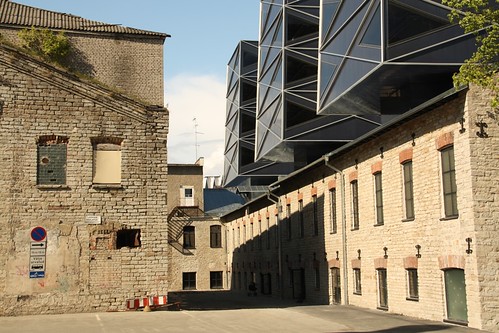
One afternoon (or was it evening? Hard to tell when the sky gets dark at midnight.) we grabbed a beer on the terrace at Beer House, Tallinn’s only microbrewery.

I liked the juxtaposition (found on many doors) of the English “Open” with the days of the week starting with P, N, R, and L. Punday? Lorsdag?
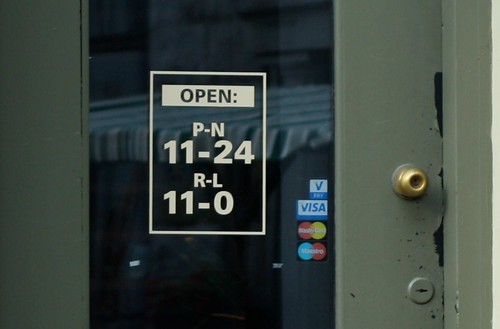
Tallinn was a great place to spend a few days, and it inspired me to visit the other Baltic capitals someday soon. If you have less time, Tallinn can be done as a day trip from Helsinki, as the boat takes only 2 hours.
The other thing that confuses me about their hours: How late are they open on N as compared to L?
"How late are they open on N as compared to L?"
0 {blank} usually means they close the place when there's noone left sober enough too spend any money.
And Balkan != Baltic
By the way, weekdays in Estonian:
Esmaspäev
Teisipäev
Kolmapäev
Neljapäev
Reede
Laupäev
Pühapäev
Much more practical – no double T's and S's.
Glad you enjoyed your visit.
"Thank you. Come again" 🙂
Oliver – thanks for all the info. Excellent that there's an easy notation for "no one sober enough to spend money" in Estonian. All countries should have that.
And thanks for catching my typo… I know the difference, I swear. 🙂
Sadly, the Estonian names of the week don't help me any more than the letter abbreviations. (But I can figure it out from the order given.)
I propose that the international symbol for days of the week should be images of sides of a die, with symbols showing 0-7 pips. 0 & 7 represent Sunday (allowing for those cultures that start the week on Sunday and Monday). Then 1-6 representing Monday-Saturday (or E-L if you like). Now how do I get the world to adopt my brilliant idea?
0 & 7 represent Sunday
How would you display zero pips on the door of an establishment?
Seeing how Estonian and Finnish are related, it appears to me that their words for Wednesday (Kolmapäev) and Thursday (Neljapäev) appear to literally translate to "three day" and "four day". Funny! We'll be in Tallinn in less than a month, but we're just going to do it as a day trip from Helsinki.
TBF – enjoy your day in Estonia. I want to go back already.
Cliff: To show dice you draw pips inside of a square.